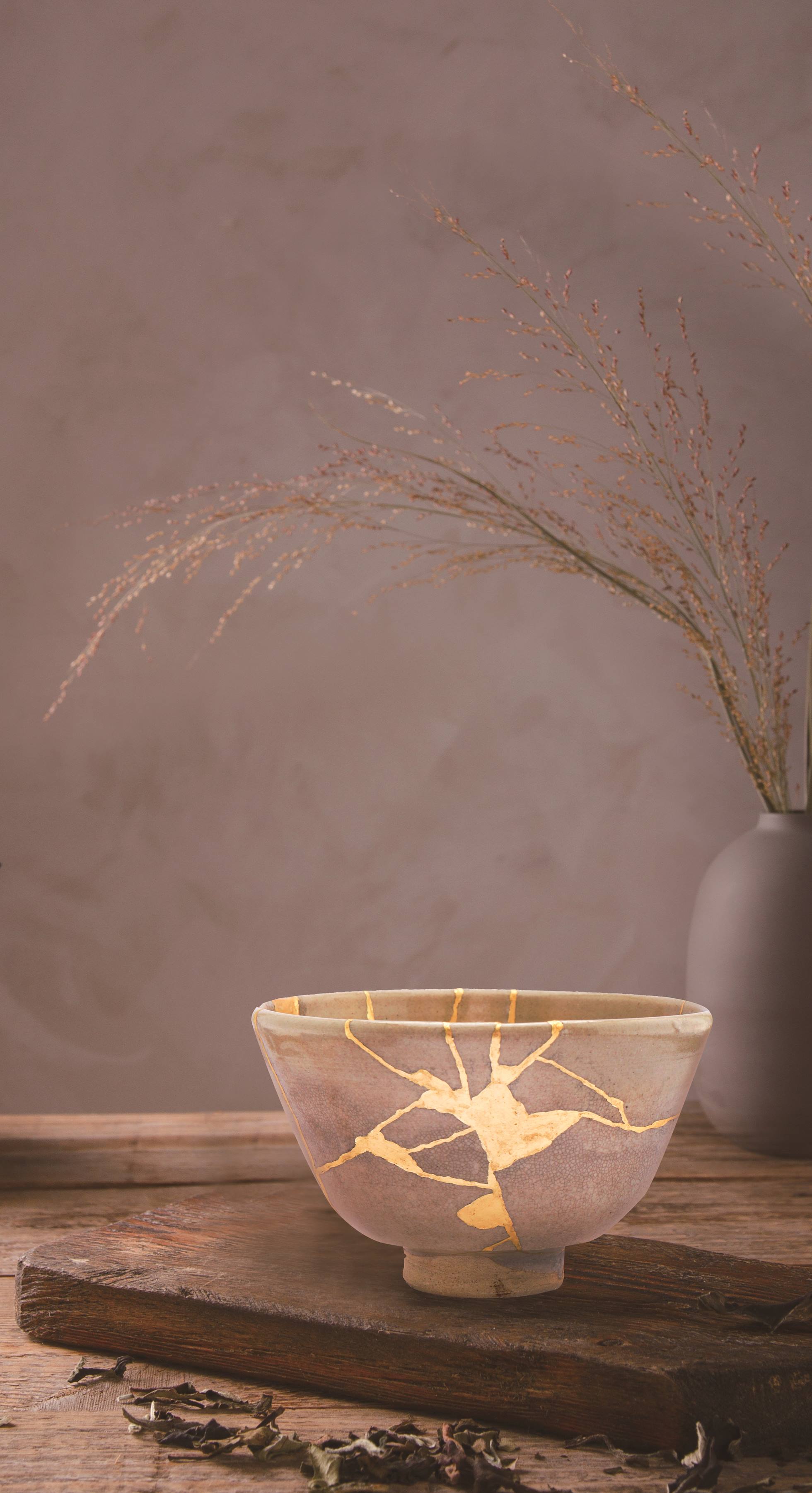
Pottery is vulnerable to impact and breaks easily. Once shattered, it’s often discarded as useless. But sometimes, it gains even greater value precisely because it was broken—when it is reborn through the art of Kintsugi.
Kintsugi ( 金継ぎ ) is a Japanese word that combines kin ( きん ), meaning “gold,” and tsugi ( つぎ ), meaning “joining” or “repair.” It refers to a traditional technique in which cracks or broken fragments of pottery are mended using gold powder mixed with tree resin—a thick, sticky substance naturally secreted by trees.
According to legend, the practice originated in 15th-century Japan when a general broke his favorite teacup. Hoping to have it repaired, his commander sent it to China, but it came back clumsily stapled with metal, leaving it unsightly. Dissatisfied, he had it repaired using gold—the most precious material—transforming the broken cup into something not only whole again, but even more beautiful than before. Pottery restored through Kintsugi is deeply valued. Its shimmering seams turn damage into design, and scars into strength—imbuing each piece with aesthetic depth and emotional meaning. In many cases, it is regarded as a work of art in its own right.
Our hearts, too, sometimes endure trials that leave us feeling fractured and broken. But when we take time to reflect and heal, those hardships become more than just painful scars—they become golden seams of strength and beauty. Like pottery restored through Kintsugi, our wounds can become part of something more radiant, more whole.
3